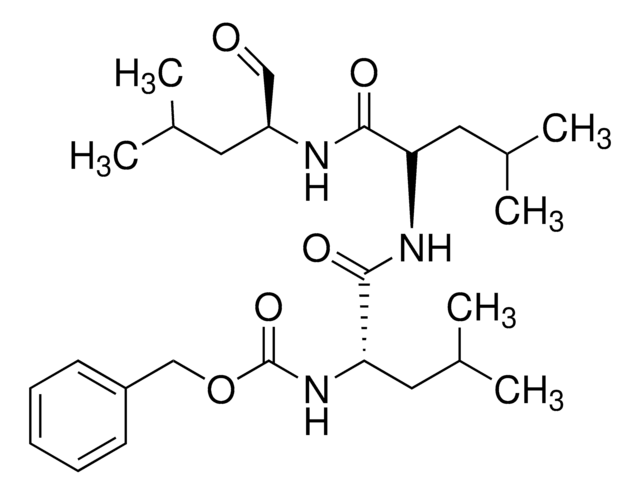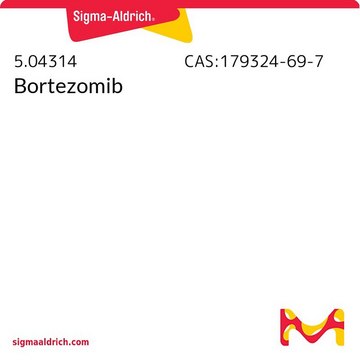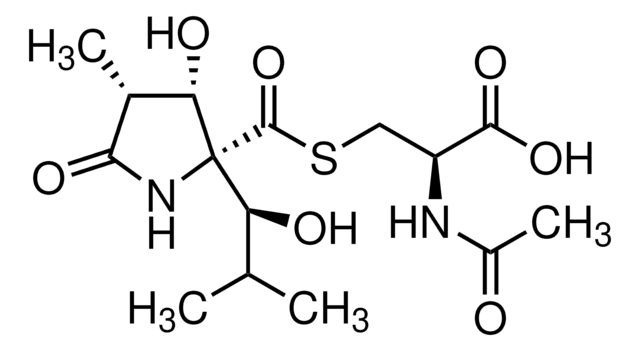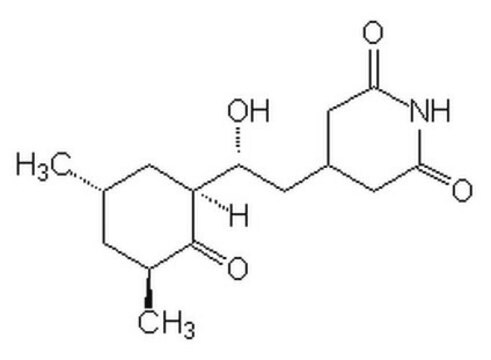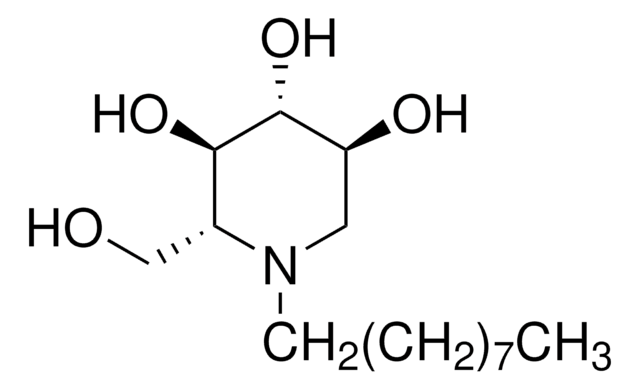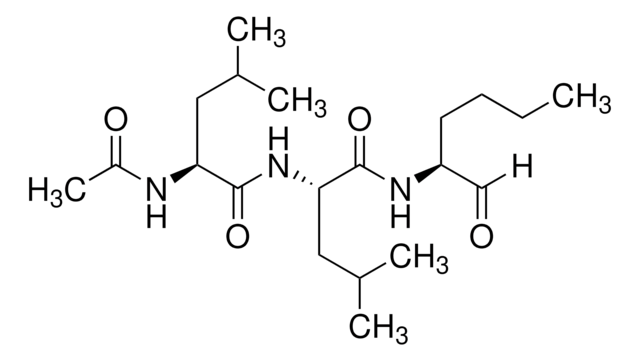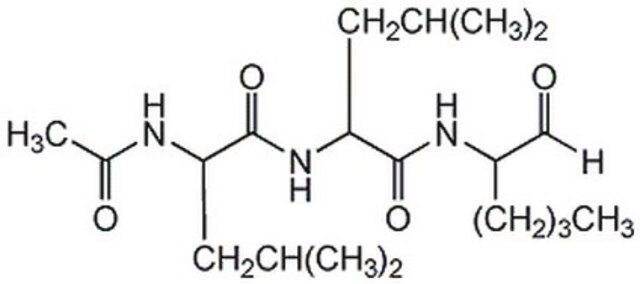SML1135
MG-132(R)
≥95% (HPLC)
Sinónimos:
Z-L-Leu-D-Leu-L-Leu-al
About This Item
Productos recomendados
Línea del producto
SAFC Hitech®
Nivel de calidad
Ensayo
≥95% (HPLC)
Formulario
powder
solubilidad
DMSO: soluble
temp. de almacenamiento
−20°C
cadena SMILES
O=C(N[C@H](CC(C)C)C(N[C@H](C=O)CC(C)C)=O)[C@H](CC(C)C)NC(OCC1=CC=CC=C1)=O
InChI
1S/C26H41N3O5/c1-17(2)12-21(15-30)27-24(31)22(13-18(3)4)28-25(32)23(14-19(5)6)29-26(33)34-16-20-10-8-7-9-11-20/h7-11,15,17-19,21-23H,12-14,16H2,1-6H3,(H,27,31)(H,28,32)(H,29,33)/t21-,22+,23-/m0/s1
Clave InChI
TZYWCYJVHRLUCT-ZRBLBEILSA-N
Información sobre el gen
human ... CTSB(1508) , NFKB1(4790) , PSMA1(5682)
Categorías relacionadas
Acciones bioquímicas o fisiológicas
Información legal
Código de clase de almacenamiento
11 - Combustible Solids
Clase de riesgo para el agua (WGK)
WGK 3
Punto de inflamabilidad (°F)
Not applicable
Punto de inflamabilidad (°C)
Not applicable
Elija entre una de las versiones más recientes:
¿Ya tiene este producto?
Encuentre la documentación para los productos que ha comprado recientemente en la Biblioteca de documentos.
Los clientes también vieron
Nuestro equipo de científicos tiene experiencia en todas las áreas de investigación: Ciencias de la vida, Ciencia de los materiales, Síntesis química, Cromatografía, Analítica y muchas otras.
Póngase en contacto con el Servicio técnico

